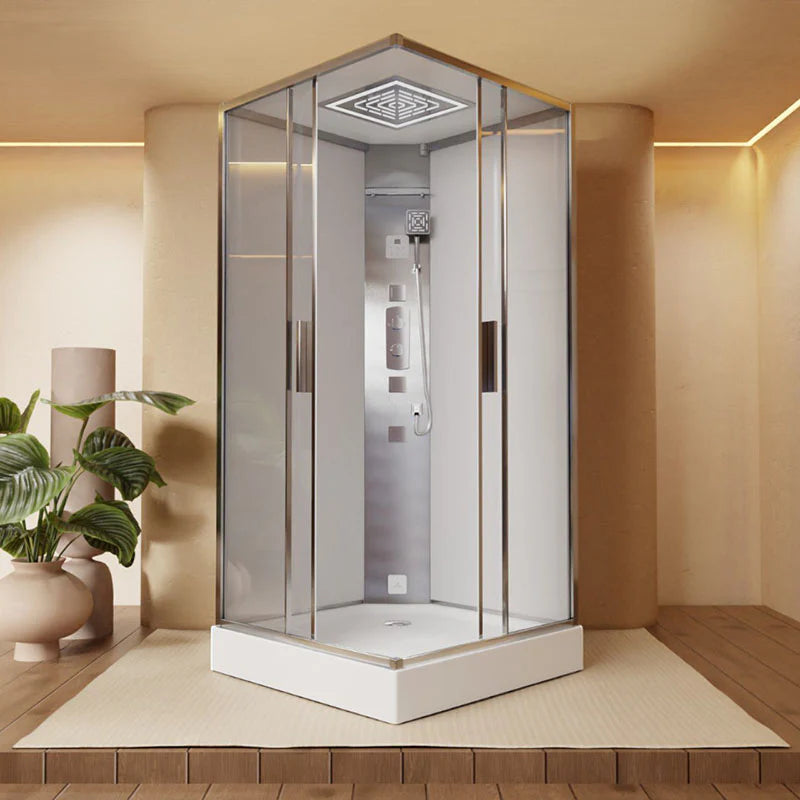Pregnant and dreaming of a Steam Room escape? You're not alone — but is it safe? Short answer: Yes, with care. A Steam Bath can soothe aches and calm nerves, but it’s not a free-for-all. Keep reading for tips, benefits, and when to skip the steam (baby’s orders!).

Understanding the Risks: Why Heat Exposure Matters
The Dangers of Hyperthermia for Pregnant Women
Pregnancy naturally raises your core temperature slightly. Adding a high-heat environment like a steam shower could push that even further.
This can lead to hyperthermia — a condition where the body overheats. It’s especially concerning during the first trimester, when your baby’s major organs are forming.
If your body temperature rises above 39°C (102.2°F), complications may arise. That’s why moderation and proper temperature control are vital.
Potential Impact on Foetal Development (Especially in the First Trimester)
Studies suggest that prolonged exposure to high heat may interfere with neural tube development in early pregnancy.
This risk is most pronounced in the first trimester, when the foetus is especially vulnerable.
To reduce the chance of any complications, it's best to avoid long steam sessions or high temperatures during this stage.
Risks of Dehydration, Dizziness, and Fainting
Steam showers encourage perspiration, which can increase the risk of dehydration. If you're not keeping hydrated, this may quickly lead to feeling faint.
During pregnancy, blood pressure tends to drop slightly. Combine that with heat and moisture, and dizziness or fainting becomes more likely.
To avoid this, ensure you're drinking enough water and limiting your time in the steam.
Steam Showers vs. Other Heat Therapies
Steam Rooms, Saunas, and Hot Tubs: Similar Concerns
While steam showers might feel less intense than saunas or hot tubs, all three share similar risks.
Saunas use dry heat. Steam Rooms rely on moist heat. Hot tubs combine immersion with warmth — but all of them can raise your internal body temperature.
For expectant mothers, it’s not a competition of which is safer. The common concern is the risk of overheating.
The Difference Between Steam Showers/Baths and Hot Tubs (Water Recycling and Temperature Control)
Steam showers often allow more control over temperature and time, making them a touch safer.
They also don’t involve sitting in warm recycled water, unlike hot tubs, which can pose hygiene concerns and trap more heat around the body.
That said, the potential to overheat remains, so caution is always recommended.
Safe Alternatives for Relaxation During Pregnancy

Warm (Not Hot) Baths: Guidelines for Safe Soaking
Warm baths can be a gentle, safe way to unwind. Just keep the temperature below 37.8°C (100°F) and avoid soaking for too long.
If your skin turns red or you start sweating, the water is likely too hot.
Using a thermometer can help you check the water before getting in.
Prenatal Massage
A prenatal massage is ideal for relieving common pregnancy aches, especially around the lower back and hips.
Make sure to book with a certified prenatal massage therapist who understands the specific needs and positions required for pregnancy.
It’s a safe and enjoyable way to relax.
Gentle Stretching and Prenatal Yoga
Gentle movement like stretching or prenatal yoga can help you stay limber and ease tension.
These activities also support circulation and reduce stress without adding heat to your body.
Always stick with routines designed specifically for pregnancy to avoid overexertion.
Hydration and Other Self-Care Practices
Not all self-care needs steam. Simple practices like staying hydrated, taking short naps, and moisturising your skin can make a big difference.
Keeping cool with fans or cold compresses helps your body regulate temperature better.
Together, these small habits can help you feel calm, refreshed, and supported during pregnancy.
When to Consult Your Doctor
Importance of Medical Advice Before Any Heat Therapy
Before stepping into a steam shower or bath, it’s best to speak with your GP or midwife.
Each pregnancy is unique, and what’s safe for one person may not be for another.
You might be advised to avoid heat entirely depending on your trimester or medical history.
Recognising Warning Signs and When to Stop
If you ever feel faint, nauseous, too hot, or simply unwell while steaming, stop immediately.
These signs mean your body may be struggling to regulate temperature. Continuing could put you and your baby at risk.
Always listen to your body — and don’t hesitate to call your doctor if something feels off.
Takeaways
-
Steam showers can be safe during pregnancy — but only with caution
-
Avoid high temperatures and long sessions, especially early on
-
Stay well-hydrated and pay attention to how your body feels
-
Safer alternatives include warm baths, massage, and prenatal yoga
-
Always speak to your doctor before trying any form of heat therapy
Conclusion
A Steam Room or Steam Bath might sound like the perfect way to unwind during pregnancy — and in some cases, it can be. But knowing when and how to use it safely makes all the difference. With your baby’s wellbeing in mind and guidance from your doctor, you can still enjoy a bit of soothing steam — just without going full sauna queen.






